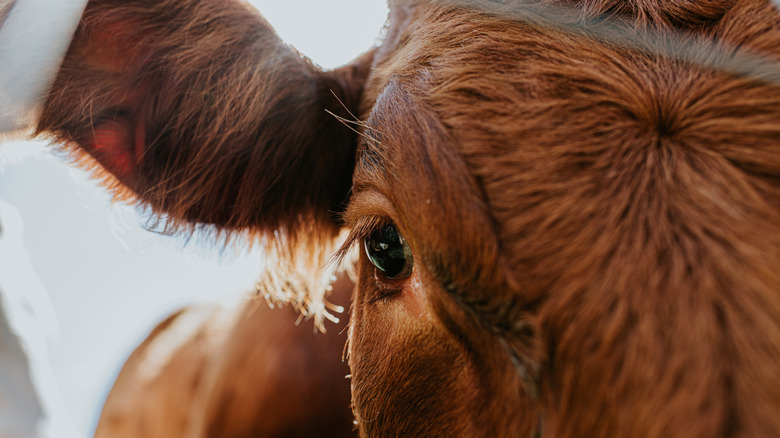The Largest Ground Beef Recall In Recent History Cost This Company More Than Money
In 2008, one of the largest beef recalls in the history of the United States took place, specifically pertaining to over 140 million pounds of beef produced by Westland/Hallmark Meat Co. This recall not only cost the California-based company profits from the recalled beef, but it also sparked a False Claims Act lawsuit. While the cost of the recall did not approach the losses experienced by auto companies during some of the most expensive car recalls in recent history, it had a significant impact on the future of beef production in the United States.
The reason for the Westland/Hallmark beef recall primarily stemmed from the fact that the company was slaughtering cattle that were not fit for human consumption. In 2008, an employee and an undercover investigator for the Humane Society of the United States made public a video showing employees of Westland/Hallmark abusing "downer" cattle prior to slaughter. By definition, these ailing cows are unable to walk, making them much more susceptible to infectious diseases, including Mad Cow disease and E. coli.
Worry over slaughterhouse practices is not new. Diseases found in meat have contributed to some of Burger King's biggest recalls, which cost the company a ton of money and also caused its distributors to experience massive losses. While the shocking video triggered a recall of epic proportions, it was the forthcoming lawsuit that destroyed Westland/Hallmark and served as a warning to other beef producers in the United States.
The Westland/Hallmark beef recall and its impact
Large federal lawsuits can pay out billions of dollars in fees and restitution. A lawsuit filed by the FTC resulted in Amazon Prime's $2.5 billion settlement in September 2025. The Westland/Hallmark case was of a different nature. At the time of the recall, Westland/Hallmark was one of the largest ground beef suppliers to the National School Lunch Program (NSLP), which provides low-cost meals to students nationwide. The video provided evidence that the company was slaughtering cows that did not meet the standards outlined in their contract with the NSLP. Furthermore, processing commercially sold meat from downer cattle was in direct violation of the inspection regulations set forth by the USDA. Ultimately, this is where the false claims lawsuit originated and what established the case as a landmark decision.
In 2012, the federal government issued a judgment of $497 million against Westland/Hallmark. It was the largest settlement ever reached in an animal abuse case at the time. The company, which never resumed operations after the February 2008 recall, was unable to pay the entire judgment due to its insolvency, ultimately barring it from ever re-entering the Beef industry. The downfall of Westland/Hallmark has subsequently been used by the National Center for Food Protection and Defense as a case study to help educate future beef producers on the effects of undermining industry standards.

